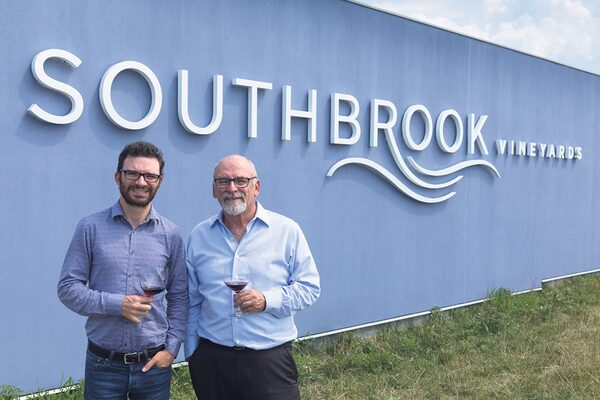
There is heightened consumer interest in organic and biodynamic production as well as appreciation of the quality of the wine produced by Southbrook Vineyards.SUPPLIED
Go into Southbrook Vineyards in Niagara-on-the-Lake, Ontario, at the end of a dry summer day, pick up a chunk of soil and you can feel it crumble into “beautiful pieces” that attest to the presence of organic matter and microbial activity, says Bill Redelmeier, who owns Southbrook together with his partner Marilyn. A similar chunk collected before the vineyard was managed according to organic and biodynamic principles would have been too hard and dry to break.
This quality of the soil – combined with the biodiversity surrounding the vines – not only means the vineyard is a balanced, thriving environment, it also translates into wines that are different, according to Mr. Redelmeier. “We went organic for social reasons, and biodynamic because we feel it makes better wine,” he says. “In fact, many of the great wineries around the world are operating according to biodynamic principles.”
Mr. Redelmeier, who has been a farmer all his life and has been in the wine industry since the early ’90s, acquired the Southbrook property in 2005 and turned it into Canada’s first organic and biodynamic certified winery.
“Before that, we grew sweet corn and strawberries [on another farm]. Since it was important that these products looked good, we were required to use chemicals that were toxic for the people who were handling them in large quantities,” he recalls. “I didn’t feel comfortable doing that nor asking others to do it.”
Ann Sperling, Southbrook’s winemaker, grew up on a vineyard. “In my earlier memories, we had biodiversity in the vineyard, but in the 1970s, when herbicides and fungicides became more prevalent, I noticed the vineyard environment changing dramatically.”
Weeds growing around the vines disappeared, along with other signs of life, she explains. “In conventional vineyards, the focus is on keeping things disease-free, weed-free, pest-free. Biodiversity is not encouraged, since the focus is on limiting all the pressures that can affect the crop,” says Ms. Sperling.
Up until this year, we’ve purchased every organic grape that’s been offered to us. Finding more grapes has been our biggest challenge.
— Bill Redelmeier co-owner, Southbrook Vineyards
Organic principles, on the other hand, prohibit the use of synthetically produced fertilizers, herbicides, insecticides and fungicides, both in the vineyard and the winemaking process, she says. “We use compost and cover crops that are turned into green manure, which all come from our farm [as required by biodynamic practices].”
And biodiversity, which is believed to support the vines’ vitality, is encouraged both below and above the ground. In Southbrook, for example, there are milkweeds, butterflies, bees, birds, small mammals and lambs in the vineyard, and Ms. Sperling calls the abundance of life-forms “symbols of biodiversity.
“I’ve always wanted to make better wines, grow better grapes and promote more sustainability in vineyards,” she says. “ All these are aspects of organic and biodynamic production.”
Profiles of organic wines are generally fresher, brighter and more lively in character, says Ms. Sperling. “Grapes grown in a conventional environment tend to be more standardized. When you work with organically and biodynamically grown grapes, the character of the individual place gets translated into the wine.”
There is heightened consumer interest in organic and biodynamic production as well as appreciation of the quality of the wine, she says. “This reputation has created a critical mass that is translating into numbers, such as the number of acres and bottles.”
“It was our vision to make the finest wines possible in a respectful, local, light-on-the-land fashion. We believe in giving back more to the earth than taking. And we are making world-class wine,” says Mr. Redelmeier, who sees Southbrook as part of the larger success story of the Canadian and Ontario wine industry. He adds that the curious can find Southbrook wines on the vineyard’s website.
Southbrook’s dedication to environmentally sound practices also means that the buildings are LEED Gold certified and powered, in large part, by solar energy.
To support vineyards transitioning to organic production, Southbrook’s stated policy promises to purchase 50 per cent of all organic grapes offered for the first four years after certification, but Mr. Redelmeier cautions that this goal hasn’t been realistic. “Up until this year, we’ve purchased every organic grape that’s been offered to us,” he says. “Finding more grapes has been our biggest challenge.”
In its first year, Southbrook purchased grapes from two certified organic growers. Last year, this number had gone up to seven. “That’s good news for us and our partners,” says Mr. Redelmeier. “But there is room for growth. Organic wine makes up four to six per cent of the global market, while the organic wine portion in Ontario is still below one per cent.”
Advertising feature produced by Globe Content Studio. The Globe’s editorial department was not involved.